Cops raided a Nazi heiress’s home to try and seize a masterpiece painting stolen from a Jewish art collector by her SS officer father – only to find it had hastily been replaced by a tapestry.
Investigators in Argentina raced to the home of Friedrich Kadgien’s daughter Patricia in the sea side town of Mar del Plata near Buenos Aires on Monday.
They hoped to find a 1743 artwork by painter Giuseppe Vittore Ghislandi called Portrait of a Lady, La Nacion reported.
But on arriving, investigators realized the painting had vanished – with a large piece of needlework that appeared to have recently been installed hanging in its place instead.
Portrait of a Lady was spotted hanging on the wall of the Kadgien’s daughter in a random coincidence after the property was listed for sale.
One of the photos on the online listing showed the artwork hanging on a living room wall – and was spotted by a Dutch journalist investigating the disappearance of the artwork.
During World War II, the painting was owned by Dutch art dealer Jacques Goudstikker. He died in 1940 aged just 42 after falling into the hold of a ship and breaking his neck while fleeing the Nazis for England.
The recent discovery of Portrait of a Lady on the wall fueled years-long speculation that the looted artwork had been in the house belonging to the Nazi’s daughter and resulted in the descendants of the work’s rightful owner demanding it be returned.
As soon as Argentine police stepped into Kadgien’s house with a warrant in hand, they were met with disappointment.
‘The painting is not in the house,’ prosecutor Carlos Martínez told the Argentine newspaper after Monday’s search of the chalet.
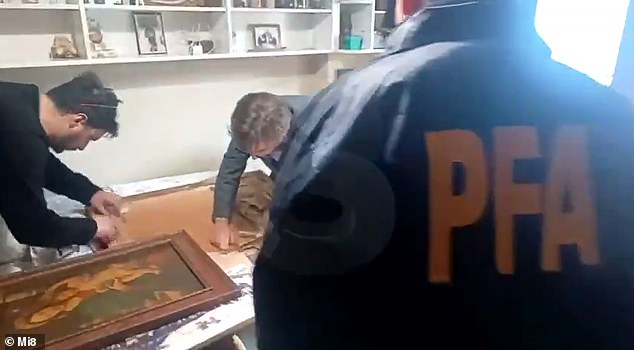
Federal law enforcement in Argentina raided the home of a Nazi heiress where a stolen painting was believed to be, according to local media
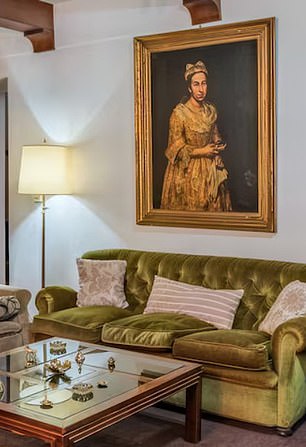
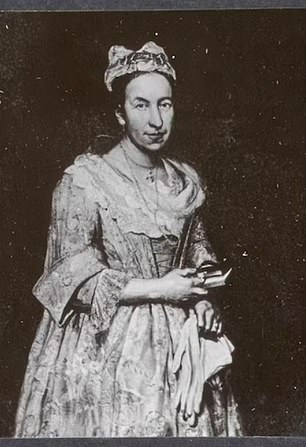
‘Portrait of a Lady,’ a portrait of Contessa Colleoni created by Vittore Ghislandi in 1743 (right), was pictured hanging over a sofa in a real estate listing posted by Robles Casas & Campos (left)
Investigators strongly believe the tapestry had been hastily used to replace something else on the wall.
‘It’s clear that where we found a tapestry before not long ago, there was something else,’ an unnamed law enforcement officer told the outlet.
Patricia Kadgien’s and her partner watched as investigators searched the home for hours.
Patricia’s lawyer was present as well, and no charges have been filed at this time.
Despite the painting being stolen in the 1940s, Patricia and her partner could face charges of concealing contraband, according to the paper.
There would be no time limits on possible charges due to the connection to the worst genocide in human history.
Kadgien, who once served as top Nazi official Herman Goering’s financial adviser, funded Third Reich war efforts through the theft of art and diamonds from Jewish dealers in the Netherlands.
Following the war, Kadgien fled Europe with the pilfered portrait, authorities believe.
He first went to Brazil, where he set up a company and then moved to Argentina, where he died in 1979. Many Nazis fled to the South American nation and rebuilt their lives under new identities at the end of World War Two.
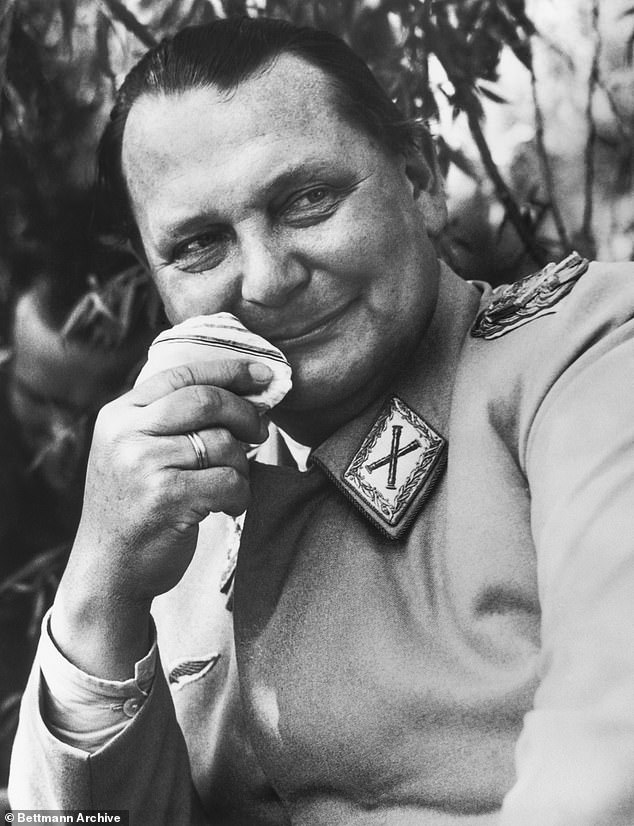
An investigation into how the portrait may have gotten to Argentina, led reporters to Friedrich Kadgien – who once served as top Nazi official Herman Goering’s (pictured) financial adviser
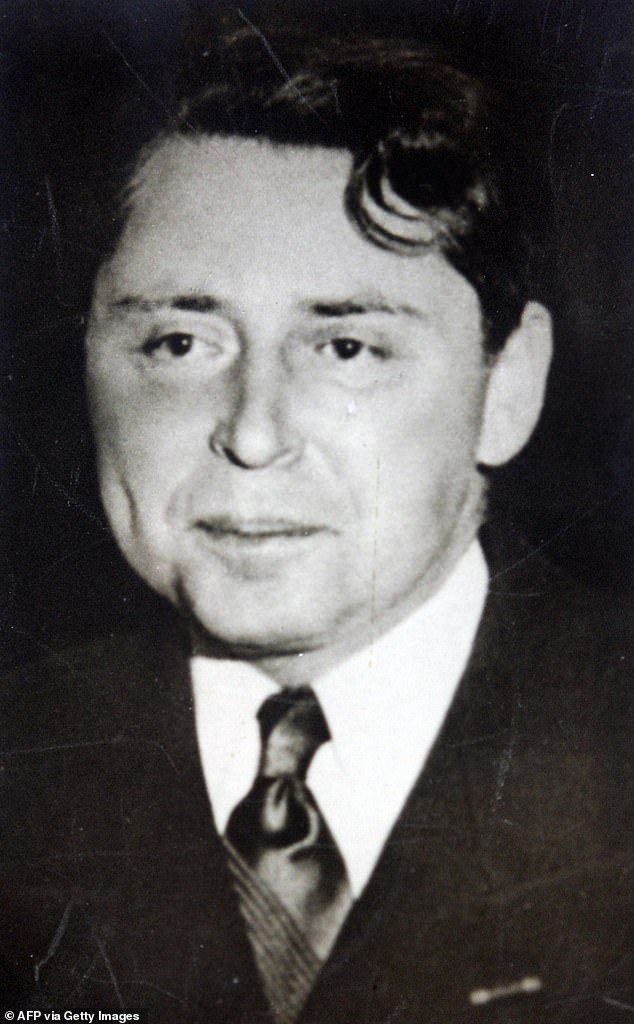
It once belonged to Dutch-Jewish collector Jacques Goudstikker, a successful art dealer in Amsterdam who helped his fellow Jews flee the Nazis before he died at sea while trying to escape to Britain onboard a cargo ship

Storm Trooper commander Reichstag president Goering is pictured standing next to Adolph Hitler
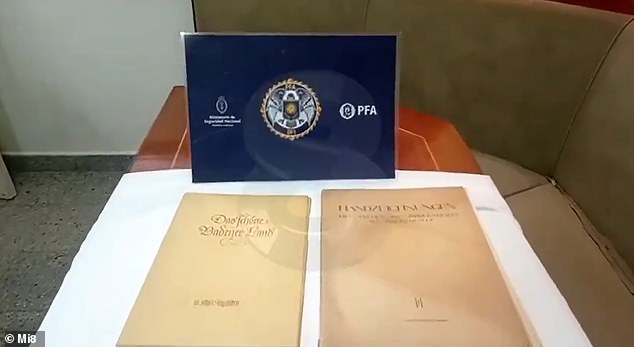
Investigators seized every documents from the home, but not the prized artwork they went in looking for, as it was not found in the Mar del Plata home
‘Portrait of a Lady’ is among at least 800 pieces owned by Goudstikker that were seized or bought under duress by the Nazis.
Investigators recovered more than 200 of the pieces in the early 2000s, but many – like ‘Portrait of a Lady’ – remained missing and are included on the international list of lost art and the official Dutch list of artwork looted by the Nazis.
Before his own unsuccessful escape from Europe, Goudstikker helped fellow Jews flee the Nazis.
Details of Goudstikker’s art collection were kept in a little black book which he took with him on his fateful journey to Britain in May 1940, as the Netherlands fell under Nazi occupation.
The booklet was eventually discovered by his surviving wife, Desi, and their only son, Edo, who made it safely to the United States.
Marei von Saher, an heir of Goudstikker, says she now plans to file a claim and launch a legal action to have the painting returned to her family.
‘My search for the artworks owned by my father-in-law Jacques Goudstikker started at the end of the 90s, and I won’t give up,’ von Saher, who is now 81 years old, told the Dutch newspaper.
‘My family aims to bring back every single artwork robbed from Jacques’ collection and restore his legacy,’ she said.










